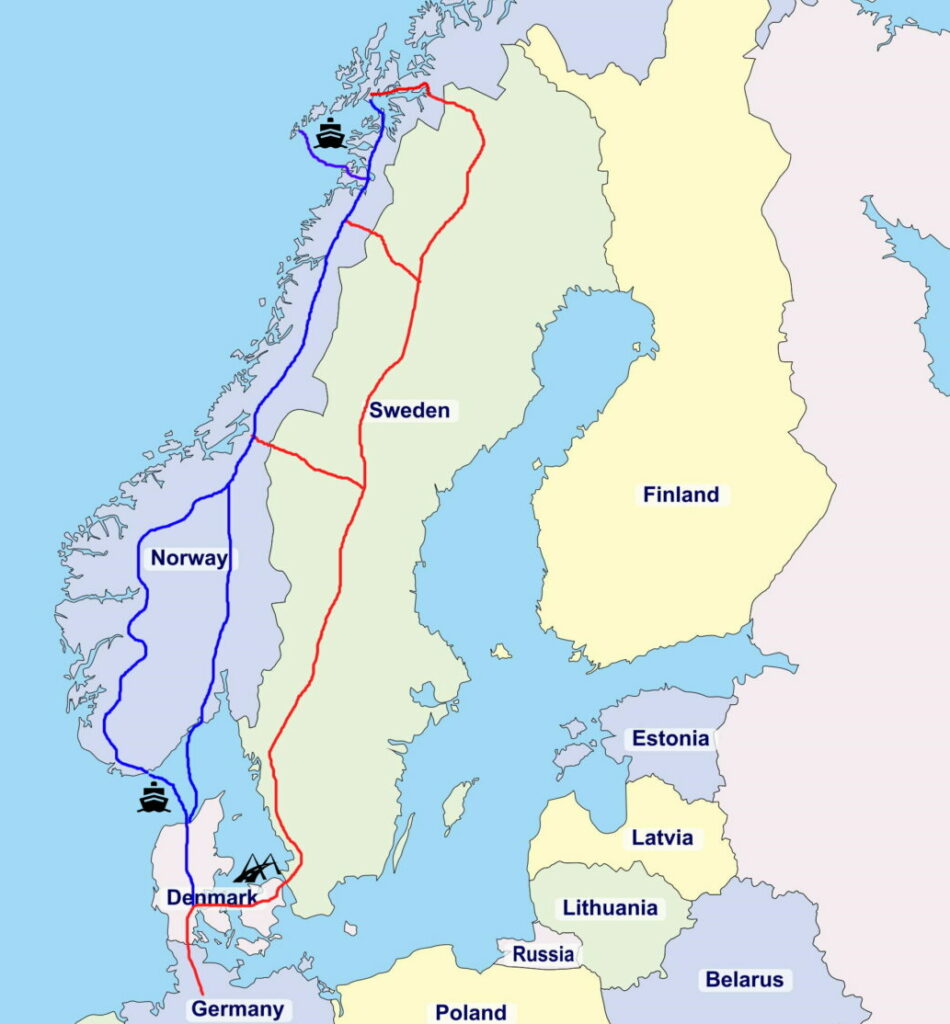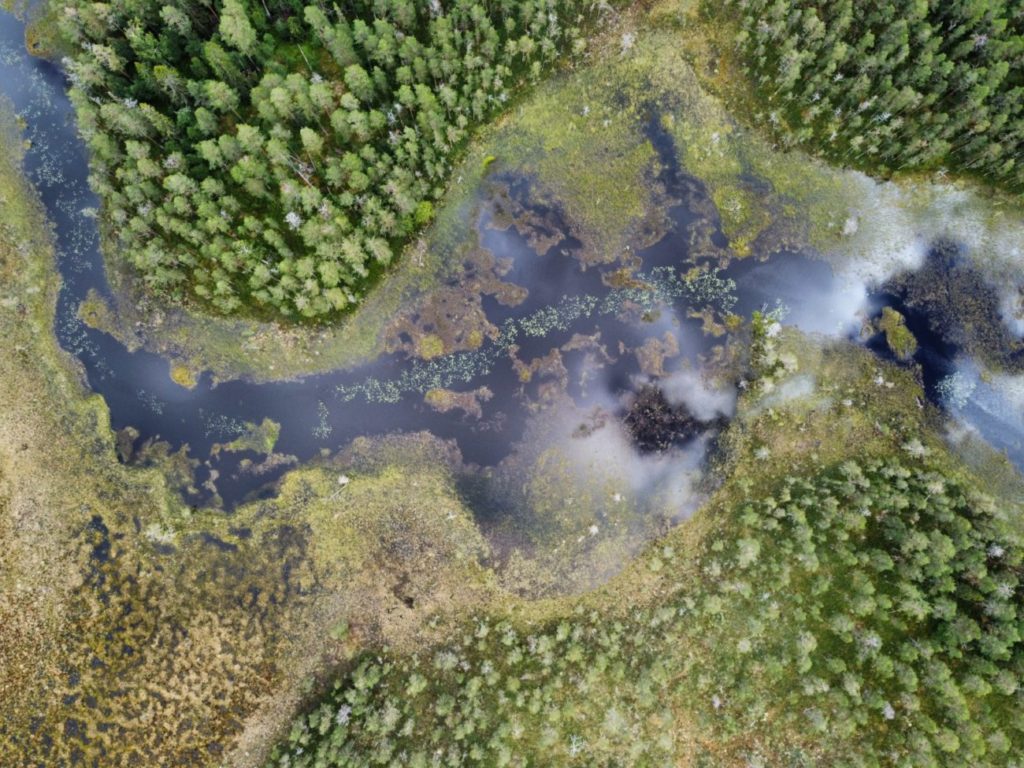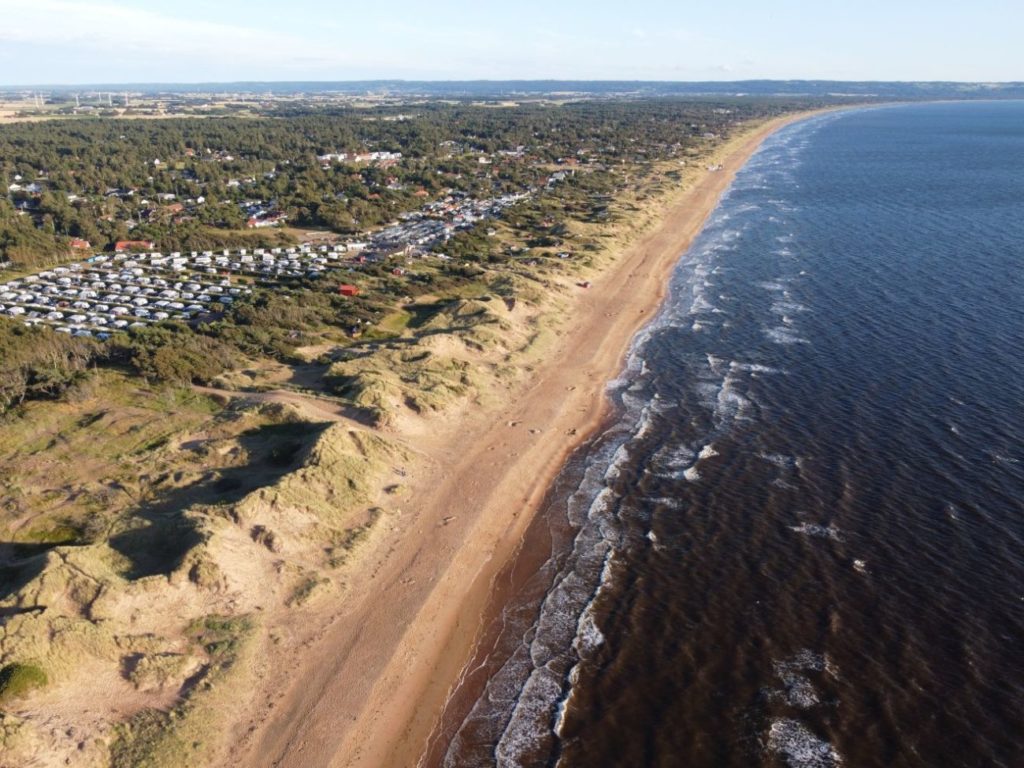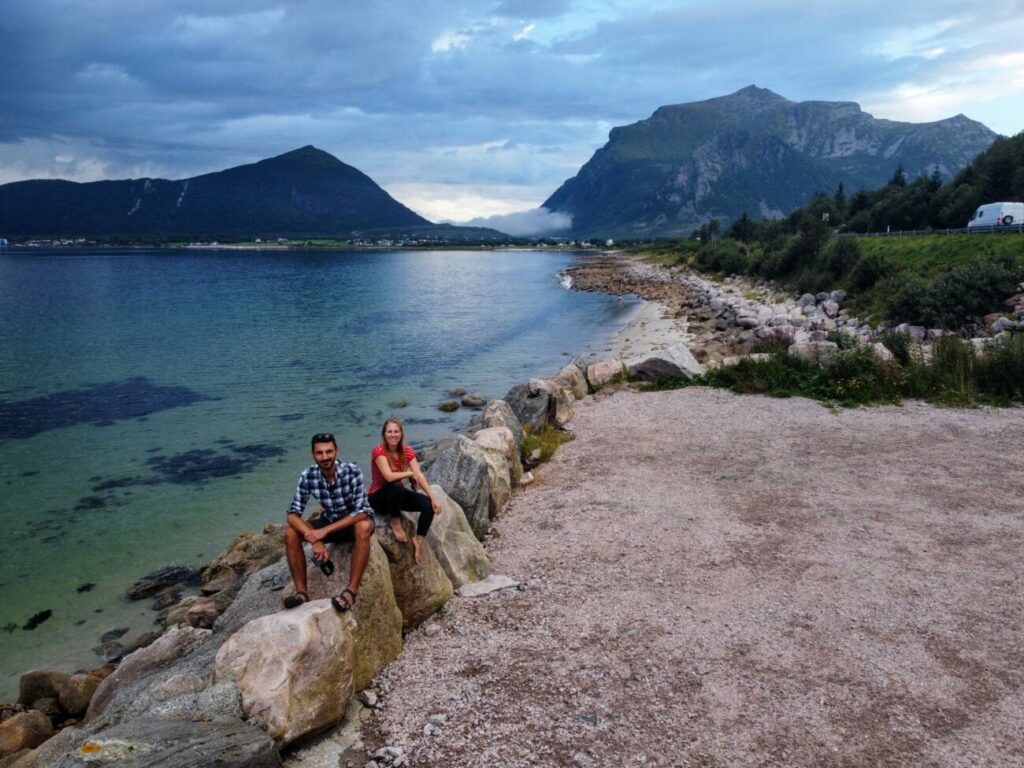A Lofoten road trip has been on our travel list for a long time. But until now we didn’t dare to do it, because the journey to Lofoten from Germany is very long and exhausting. It takes more than 2500 km to reach the Lofoten islands, depending on where you start from. After we had finally fulfilled the dream of our own campervan, we quickly started planning our first Lofoten trip.
Especially the journey to the Lofoten was a big issue. What is the best way to get to Lofoten Islands? Do we take the ferry from Hirtshals or do we drive over the toll bridges to Sweden? And when getting to Lofoten, should we drive through Norway or through Sweden? Which route is faster and better to drive? In our guide we tell you which route you should choose and how to plan your journey to Lofoten.
Lofoten Arrival
Since we wanted to travel from the western part of Germany with our own campervan, it is between 2500 and 2700 km to reach the Lofoten, depending on which route you choose. According to Google Maps you need 32 hours of pure driving time for this distance.
That means even if you drive 6 hours a day and every day, you need at least 5 days. And that’s quite stressful, especially if you want to go with children or a dog. Even from the border to Denmark (from Flensburg) it is still 2000 km and 27 hours until you reach the Lofoten islands.
We planned just under a week for the journey to the Lofoten from west germany, to arrive without stress. But even if you drive from sunrise to sunset you need at least 3 days from the border of Denmark (at about 9h driving per day). We would not recommend this unless you have very little time for the whole Lofoten trip.
Lofoten Arrival | Description of the Route Alternatives
There are 2 possibilities of getting to the Lofoten:
- the journey through Norway (blue route) and
- the journey through Sweden (red route).
Of course there are many more ways to get there, but we will focus on the two most common ones here. A big difference between the routes is how to get from Germany or Denmark across the North Sea to Norway or Sweden.
Here you have the possibility to go by ferry e.g. from Hirtshals in Denmark to Kristiansand or Larvik. Alternatively, you can get from Denmark over 2 long toll bridges via Copenhagen to Sweden and from there continue north.
 Lofoten journey: Route options | Source: https://d-maps.com/carte.php?num_car=96516&lang=de
Lofoten journey: Route options | Source: https://d-maps.com/carte.php?num_car=96516&lang=de
In the next sections we will go into detail about the two variants and describe our chosen itinerary to Lofoten, so you know which route to choose and what to expect along the way.
In addition, we will also introduce you to our camping pitches on the route to Lofoten, some of them were really unique and beautiful.
Alternative 1 (red) | Getting to Lofoten via Sweden (recommended)
Since we wanted to keep our exact departure day quite flexible, we chose to travel via toll bridges through Denmark and Sweden and not use a ferry. Within 7 days we went up north to the Lofoten in northern Norway.
During this time, we always made breaks and stayed overnight in great places, but we also drove the whole day on rainy days. Since the journey is very individual depending on where you come from, we describe the journey only from the border of Denmark.
From Denmark via Copenhagen to Sweden
At the beginning of the Lofoten journey through Denmark you follow the E45 to Kolding and then the E20 in the direction of Copenhagen. Unfortunately, the journey via Denmark is not free of charge, because you have to cross two toll bridges. After you have already driven about 2 hours through Denmark, you will first reach the Storebælt Bridge. It is 18 km long and costs about 33 € toll.
After the bridge it goes about 110 km further until you pass Copenhagen and reach the Öresund Bridge. This one is 7.8 km long and costs another 63 Euro toll. Quite pricey, but you save the costs for the ferry and are completely flexible in time.
 After crossing the bridge, you are already in Sweden.
After crossing the bridge, you are already in Sweden.
After crossing the border, you should stick to the coast and drive past Gothenburg. Google Maps suggests other options, but if you choose our route, you will pass a highlight of Sweden: Mellbystrand, one of the most beautiful beaches in Sweden.
The beach is kilometers long and consists of powdered sugar sand. Directly behind it are beautiful dunes and a dense forest with many beautiful hiking trails. Moreover, you can not only take a break by the sea here, you can also spend the night here for free. Everything you need to know we tell you in our travel report to Mellbystrand:
Mellbystrand I Sweden’s most Beautiful Beach
On the E45 North to a Beautiful Lake
On the next day of the Lofoten journey, we continue north on the E45. It’s best to turn on the cruise control and just enjoy the views of the passing forests and lakescapes while driving. This was exactly our idea of Sweden before the trip, which was then confirmed:
Sweden consists mostly of huge forest landscapes and thousands of large and small lakes.
Since the weather during our trip was just perfect, we imagined stopping at every lake and just jump into the cool water. And exactly this idea should come true in the evening. We stopped at a large swimming lake.
The campsite is exactly as you imagine a campsite in Sweden. A beautiful big lake with a sandy beach surrounded by a huge, dense forest. In fact, it was so beautiful there that we didn’t leave until the afternoon of the next day.
We just enjoyed our time here way too much. You can find the swimming lake here on Google Maps.
Past Hamra National Park to Östersund
There is a lot of driving today, but there is also a great stop along the way that you should definitely make. Almost 6 hours of driving are ahead of you and if you have spent some time at the swimming lake like we did, you will reach your next campsite late in the evening. Today you follow the E45 to Östersund. About halfway you can take a break and stretch your legs in the beautiful Hamra National Park.
The national park offers several hiking trails that lead you through one of the oldest forest and moor landscapes in Sweden. This is also the area with the most bears in Sweden. But don’t worry: It’s still rather unlikely that you’ll meet a real bear.
You can find all information about Hamra National Park here: Hamra National Park Sweden | In search of the Bears 
After the visit to the national park you will continue along the E45 for about 3 hours until you reach the small town of Östersund. Here we stayed a little outside on a small, lonely clearing in the forest with a view of a raging river. You can find the campsite here on Google Maps.
Decision: Crossing the border to Norway or continue through Sweden
At this point of the journey you have to decide if you want to drive further north through Sweden to cross the border at Mo I Rana (or even much further north at Narvik) or if you want to cross the Norwegian border already here. There is not a big difference in time for both routes.
The reason why we crossed to Norway already here was our dog. If you enter Norway with a dog, it must receive a treatment against tapeworms a maximum of 120 hours before crossing the border. After that, entry is officially no longer possible.
If we had not had this restriction we would probably have continued through Sweden to continue to experience the wonderful nature of this country and would have crossed the border in northern Sweden.
 By the way, the border crossing we used is in Storlien and is open from 8:00-21:00. If you need to declare your dog or other goods, just stop here, go into the customs building on the left side, declare everything and then drive on.
By the way, the border crossing we used is in Storlien and is open from 8:00-21:00. If you need to declare your dog or other goods, just stop here, go into the customs building on the left side, declare everything and then drive on.
Strangely enough, we didn’t get any confirmation when we registered our dog and the border guard didn’t make any notes or entered anything into his computer. That means we didn’t have to register our dog at all, because neither we nor the border official have any confirmation for the registration.
A short break at the most idyllic rest area in Norway
Immediately after the border we would recommend a stopover at the most beautiful rest area in Norway. If you have time, you can also stay here for a whole day. On the parking lot itself there are some picnic benches, an outhouse and enough space for 4-5 caravans. But much more interesting are the different paths that lead away from the parking lot.
If you follow the path to the right, you can walk along a great river and enjoy the great nature. If you turn right and follow the signs to the barbecue area you will come down to the lake. There is a great terrace above the lake with seating, a fireplace with free firewood and even a paddle boat that you can use for free. This is something you really only find in Norway.
If you follow the left hidden path from the parking lot, you will come to a viewpoint with seating. From here you can enjoy the view of the lake and the surroundings. Simply a wonderful place.
After this break we drove a little further. We spent the night on a cozy campsite directly at a large lake not far from the E6. You can find the recommended campsite Vegset Camping here on Google Maps.
Further North to the Ferry in Bognes
On the further way north we were on the E6, the main road between north and south Norway. On the way we made 2 overnight stops in Mo i Rana (here we can recommend Røssvoll Camping) and about 5 hours further just before the ferry in Bognes. The site here is extremely recommendable, because we had a lonely spot directly on a beautiful beach.
The next morning we could go very early to the ferry to cross from there to Lodingen. You can find the campsite here on Google Maps.
You have made it: You are on the Lofoten islands! If you are still looking for an itinerary for your Lofoten road trip, then we have the most important information for you here Lofoten Road Trip I Perfect Itinerary for 7 Days
Alternative 2 (blue) | Getting to Lofoten through Norway
If you do not want to drive through Sweden on your journey to the Lofoten islands, because you want to visit the highlights of Norway on the way there, then you should choose a different route. You should choose a route where you drive the whole time through Norway. But for that you have to take a ferry first.
Which Ferry should you take to Norway?
Our recommendation is to take the ferry from Hirtshals in Denmark to Kristiansand in Norway. Here you will end up in Fjord Norway and there is no direct route north from here. Therefore, this itinerary only makes sense if you have a lot of time available and want to see a lot of Norway’s south.
You can follow our 2 week itinerary through southern Norway and experience the many highlights of the south.
If you want to take a shorter, but less scenic route, you should cross from Hirtshals to Larvik. There you can drive directly on the European road E6 via Oslo to the north. If you made it on one of many possible routes through Fjord Norway (or alternatively past Oslo) and you get to Trondheim, there are not many route alternatives left to choose from.
From Trondheim towards the North
From Trondheim on, Norway becomes so narrow that there is only one real main route to the north: the European road E6. So here you will probably take the same route for the outward and return journey. Only in the far north (between Saltstraumen and Holm) there is a recommendable parallel route to the E6, which you – provided you have enough time – should take on one stretch: The Norwegian Landscape Route Helgelandskysten (Fv17).
This spectacular coastal road leads over 400 km directly along the Norwegian coast and will take you a few days. However, the scenery here is beautiful and a complete contrast to the busy E6.
In northern Norway, by the way, there are also much less scenic highlights than in the south.
However, there are some cool sights. In northern Norway, you should definitely take a look at the Svartisen glacier and the tidal stream Saltstraumen, which are also located on the fantastic coastal road Helgelandskysten.
To Lofoten by Ferry
You can take a ferry from Bodø to Lofoten. The crossing takes about 3-4 hours and you land in the south of Lofoten in Moskenes. Alternatively, you can drive about 3 hours further on the E6 and cross over in Bognes and land after about an hour’s drive in the north of Lofoten in Lodingen.
The decision which ferry to take is influenced by whether you want to cross Lofoten from top to bottom or make a round trip on the archipelago.
Of course, the length of the ferry ride also has an influence, because we did not want to take our dog on a 3 hours ferry journey, especially since you have to leave your dog in the car on the ferry to Moskenes. But if you have only little time available, then you should take the ferry between Bodo and Moskenes.

Pros and Cons of the two Alternatives
We recommend alternative 1, which we also took. The approach to the Lofoten is simply much faster through Sweden. If you have ever driven on Norwegian roads you knows why. In Norway there are many traffic circles and winding roads. This makes the drive interesting and exciting, but also tedious. In Sweden, the roads are rather straight and easier to drive.
Therefore, you will make faster progress and have the advantage of discovering an additional country on your road trip. On the other hand, Sweden’s scenery is much less spectacular than Norway’s and, in our opinion, can’t be compared to it.
We have chosen for the return trip the route through Norway, so that we do not drive the same route twice and we can still visit the spectacular highlights of southern Norway. 
Tips for your Lofoten Journey
Travelling with a Dog
If you have a dog like we do, then you have to pay attention to some things when entering Norway, Sweden and also Denmark.
Travelling to Norway with a Dog
Before you can enter Norway with your dog, there are some things to consider. The following requirements apply:
- You need an EU pet passport
- The dog must be chipped and the identity number must be stated in the pet passport and in all veterinary certificates/original documents
- The animal must have a valid rabies vaccination
- Dogs (including puppies) must have been treated for tapeworm infestation within the last 120 to 24 hours
- You are allowed to import a maximum of 5 dogs
- You are not allowed to import the following breeds of dogs: Pit Bull Terrier, American Staffordshire Terrier, Fila Brasileiro, Tosa, Dogo Argentino, Czechoslovakian Wolfhound, as well as hybrids of these breeds and hybrids between dogs and wolves
At the entry you have to show the documents to the customs without being asked. During our trip to Norway, however, no one was really interested in this. The border official did not note anything and we did not get a certificate or something similar. We would not have been able to prove that we had registered the dog.
Travelling to Sweden with Dogs
Entering Sweden with a dog is a bit easier than in Norway. You must meet the following requirements: Your dog must…
- have an ID identification (chip)
- have a valid vaccination against rabies
- have a valid EU pet passport
- be registered with customs
You can also do this registration online beforehand. Then you do not have to show anything when entering Sweden, but can drive through the green lane where nothing has to be registered.
Travelling to Denmark with Dogs
In Denmark the entry with your dog is the easiest. You do not need to register the dog beforehand, but you only need to consider the following things: Your dog must…
- have an ID marking (chip)
- have a valid vaccination against rabies (at least 21 days ago)
- have a valid EU pet passport
Tolls in Norway
There are on many roads in Norway sections that are subject to toll. You will be informed by a sign a few hundred meters in advance, but usually you have no other choice. At the toll bridge you are then automatically photographed, of which you notice nothing. You simply drive past and do not have to stop and pay the toll directly like in France or other countries.
You can pay the toll at kiosks or supermarkets if you want, or you can also create a credit there. Alternatively, you can do this at autopass.no online. However, this is cumbersome and not very convenient. 
We recommend that you do nothing, because the toll costs are automatically collected for foreigners and a few months later you will receive a letter from England (from EPC plc – Euro Parking Collection) in which the driven routes and the accumulated costs are shown in detail.
This is also not a cent more expensive than if you had paid the tolls directly in Norway. Interestingly, some ferry routes are also charged via the system called Autopass, and seemingly arbitrarily.
On some ferry routes, we paid the cost of the ferry by credit card on the ship on the outward journey, and on the return journey they simply photographed our license plate, so we didn’t have to pay anything on the spot. The cost will then show up on our toll bill.
Still looking for an itinerary or the best highlights of Lofoten?
Lofoten road trip I perfect itinerary for 7 days
Lofoten Highlights I The 10 most beautiful highlights














